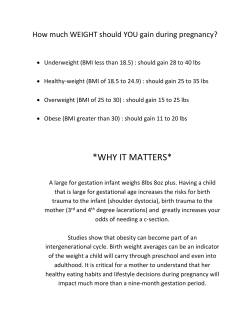
My Pregnancy Plate
My Pregnancy Plate Choose 2 to 3 servings of nonfat or 1% milk or yogurt (cow, soy or almond). A serving is 8 oz. Choose yogurt with less than 15 g of sugar per serving. Choose large portions of a variety of non-starchy vegetables, such as leafy greens, broccoli, carrots, peppers or cabbage. Drink mainly water, decaf tea or decaf coffee and avoid sugary beverages. Choose small amounts of healthy oils (olive and canola) for cooking or to flavor foods. Nuts, seeds and avocados contain healthy fats. Protein Non-starchy vegetables Choose a variety of whole fruits. Limit juice and dried fruits. Whole grains, legumes and starchy vegetables Fruit is great for snacks and dessert, too. Fruit Choose protein sources such as poultry, beans, nuts, low-mercury seafood, eggs, tofu or low-fat cheese. Limit red meat and avoid cold cuts and other processed meats. Choose whole grains, such as whole wheat bread or pasta, brown rice, quinoa or oats and other healthy starches like beans, lentils, sweet potatoes or acorn squash. Limit white bread, white rice and fried potatoes. Healthy snack ideas When you are pregnant, you need about 300 extra calories each day starting in the second trimester. This is not really that much. It equals one large snack or two smaller snacks a day. Large snack Two small snacks OR 1 slice whole wheat bread 1 Tbsp peanut butter 1 medium apple What about sweets? 1 cup cubed melon 6 oz. low-fat yogurt 12 almonds Food safety You may be wondering whether there is room for cookies, candy, ice cream or other sweets in your pregnancy diet. You can eat sweets, but not every day. The goal is to use My Pregnancy Plate as your guide for healthy eating, be physically active and satisfy your sweet tooth with an occasional treat. This balance will help you achieve the recommended weight gain below. Here are some tips for safe food handling: • Wash your hands before preparing food and eating. • Wash fresh produce thoroughly before eating. • Cook food thoroughly, especially eggs and foods made with eggs, meat, poultry and seafood. Avoid the following: • Raw fish, especially shellfish and sushi Recommended weight gain during pregnancy based on pre-pregnancy weight Pre-pregnancy weight Recommended weight gain Recommended rate of weight gain after first trimester Underweight (BMI <18.9 kg/m2) 28–40 lbs 5.0 lbs/month Normal weight (BMI: 18.9-24.9 kg/m2) 25–35 lbs 4.0 lbs/month Overweight (BMI: 25-29.9 kg/m2) 15–25 lbs 2.6 lbs/month Obese (BMI > 30 kg/m2) 11–20 lbs 2.0 lbs/month www.ohsuwomenshealth.com/nutrition • Unpasteurized milk, juice and soft cheeses such as feta, bleu cheese, brie and queso blanco. Soft cheeses made from pasteurized milk are fine. • Raw sprouts • Herbal supplements and herbal teas, until you check with your provider • Swordfish, tilefish, king mackerel and shark, due to high mercury content Do include a source of DHA. This is a type of fat called “omega-3” that is very important for your baby’s healthy brain and eye development. Omega-3 fat is especially important from 20 weeks of pregnancy until you are done breastfeeding. Experts recommend that pregnant and nursing women get 300 mg of DHA every day. The best sources of DHA are wild albacore tuna (make sure it says “troll-caught”) and wild salmon. These types of fish are safe for pregnant women. If you don’t eat fish, you can get DHA by taking fish oil capsules. Take enough to get 300 mg of DHA each day. If you don’t eat animal products, you can take DHA capsules made from algae. © Oregon Health & Science University 2013
© Copyright 2025





















